At 96, Lucy Van Bibber Sanderson reflects on her early years growing up at Mica Creek, working at St. Mary’s Hospital in Dawson City and gaining the skills and experiences that would serve her well throughout her long, full life
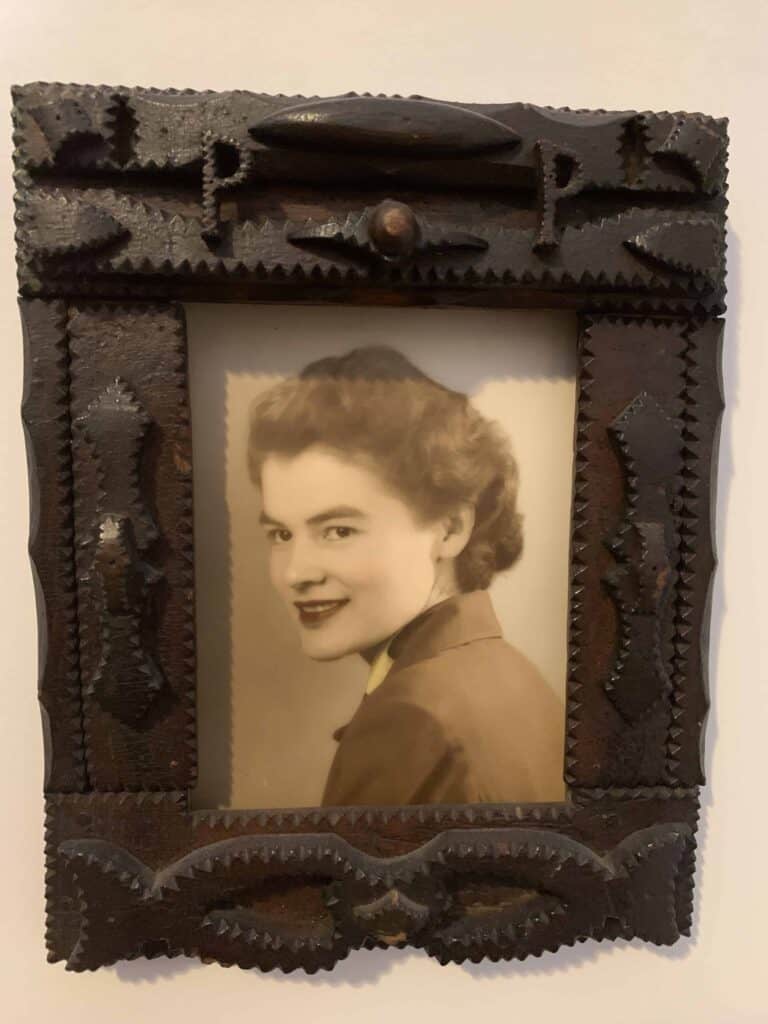
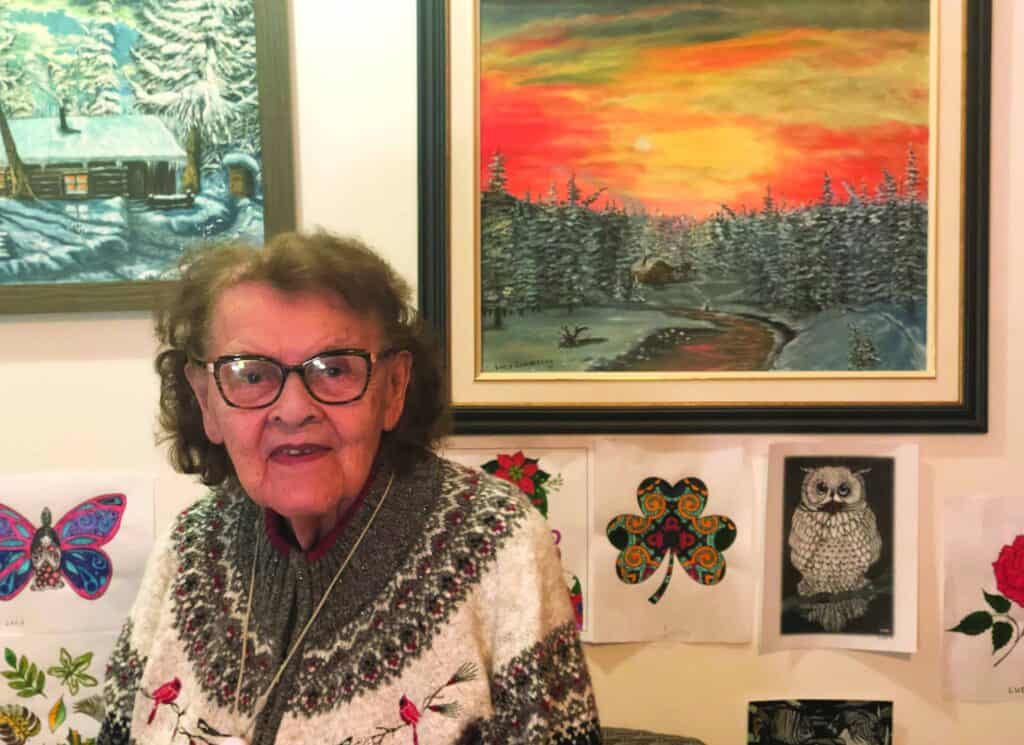
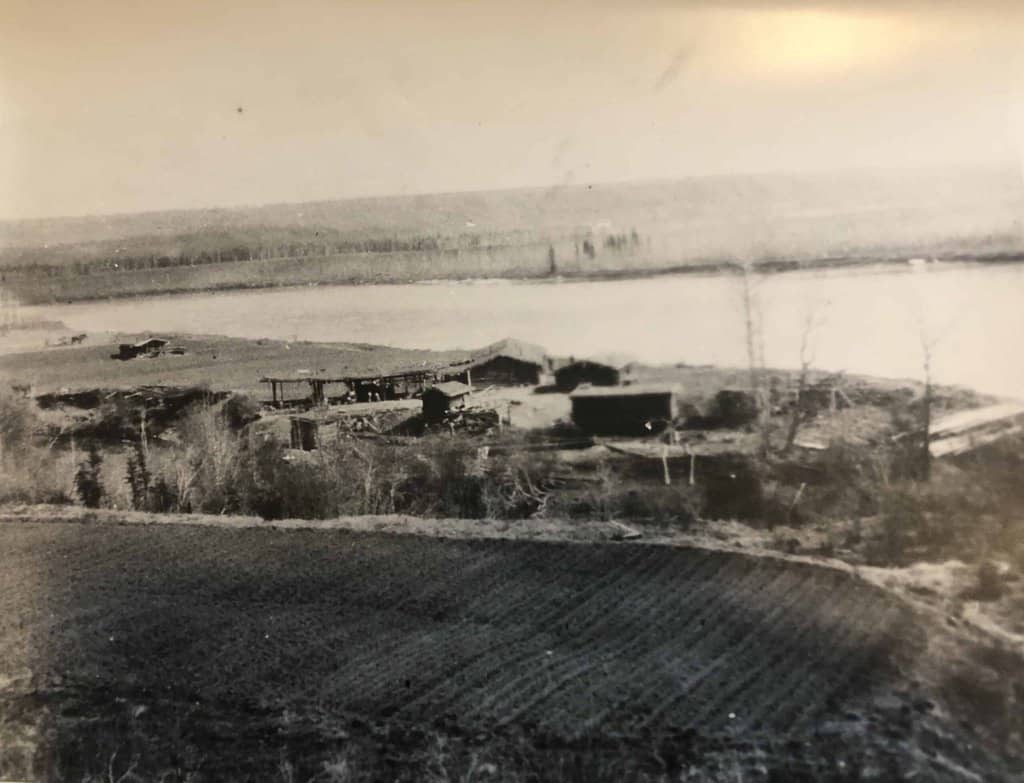
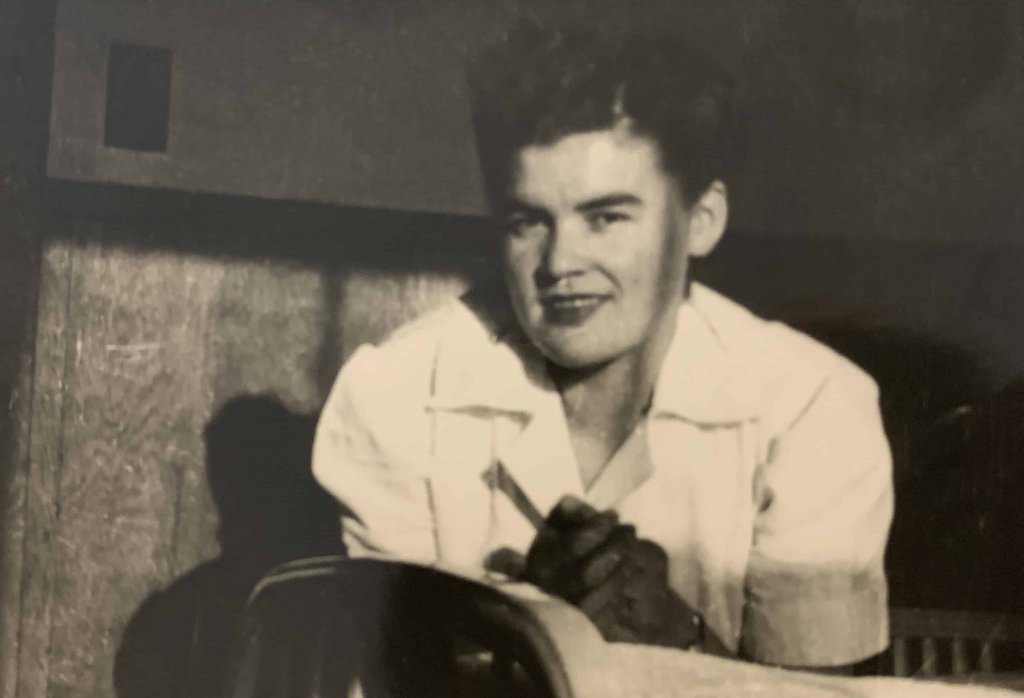
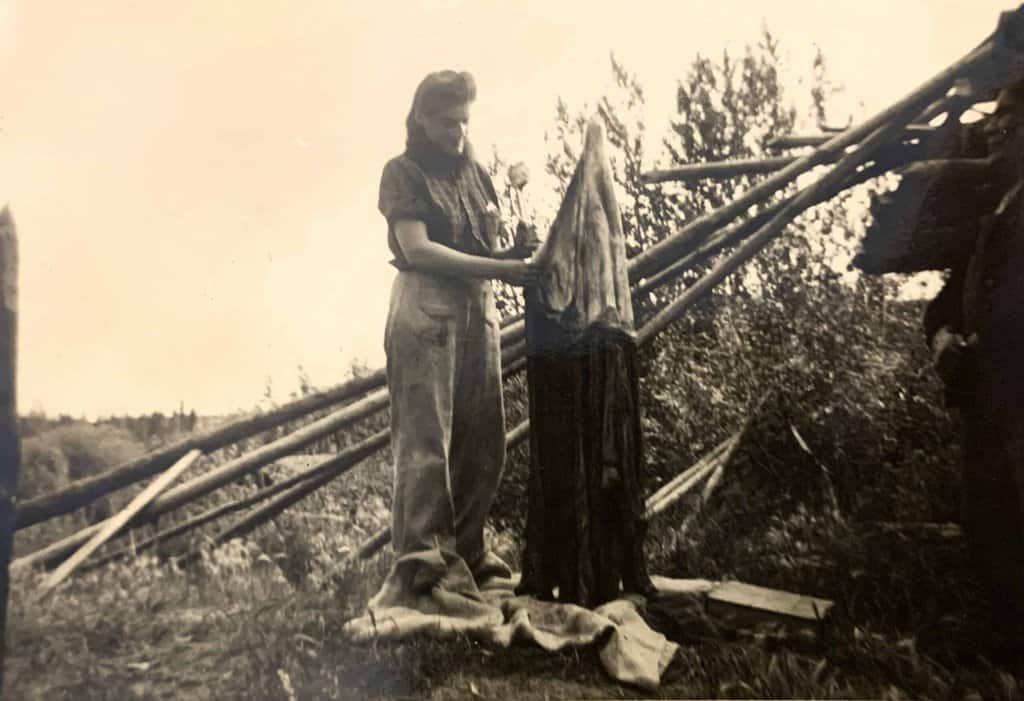
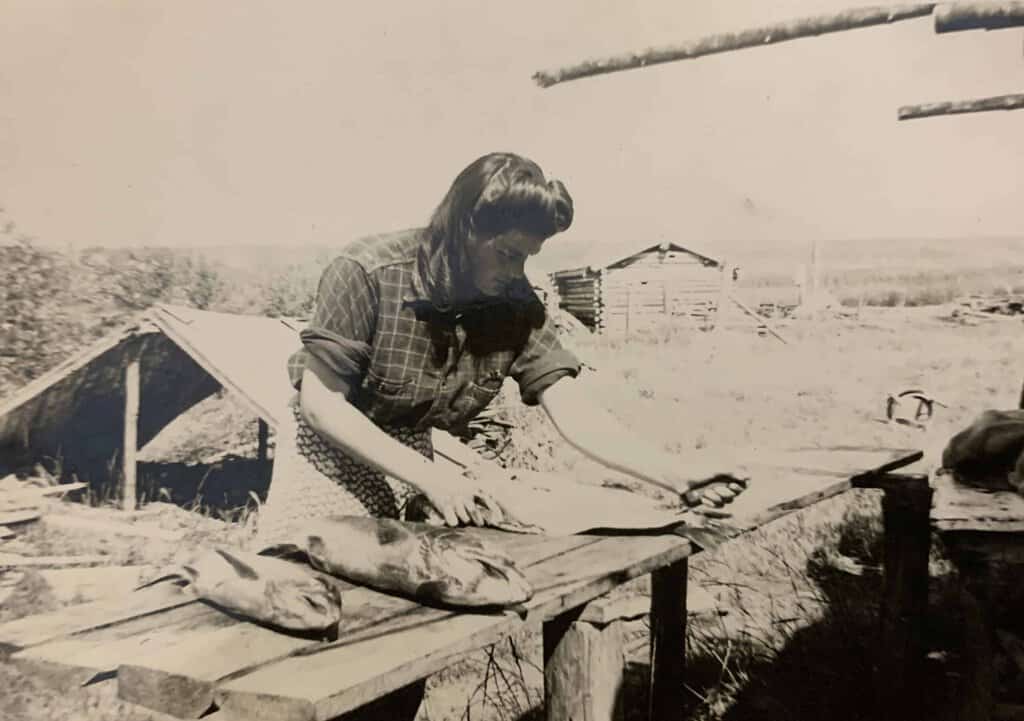
When Elder Lucy Sanderson (née Van Bibber) was growing up in her family home in rural Yukon in the 1930s, she dreamed of travelling. “The cranes would fly overhead in the spring and fall, and I thought, Oh, I wish I could go with them. I always wanted to see what was on the other side of the hills.”
Sanderson is the fourth youngest of 16 children born to Ira and Eliza Van Bibber (two of the children were stillborn). Like many of the Van Bibber children, she was born at the family home at Mica Creek, located about 1.5 kilometres from what is now Pelly Crossing.
While growing up, the children learned how to be self-sufficient and live on the land. They hunted and trapped, spending some winters at a trapping cabin at Crooked Creek. They helped keep up the family garden. They studied and learned. And they also had a lot of fun.
“We had a road going up the back of the trappers’ cabin. We used to get high up there [on the snow in winter], and then we’d slide down in a toboggan and hit the side of the house to stop,” said Sanderson with a laugh. “My mother would just shake her head.”
Sanderson’s father, Ira, came from West Virginia to the Yukon, with his brother, during the Klondike Gold Rush of 1898. His brother carried on to Alaska, but Ira stayed in the Yukon.
One day, in the summer of 1907, he was stocking up on supplies at Fort Selkirk when he met Eliza Jackson. The pair married, and the rest is history. In fact, many of the Van Bibber children led notable lives, including Alex, who was a well-known trapper; and JJ, whose memoirs and photos were published in the 2012 book, I was born under a spruce tree.
Sanderson remembers seeing her older siblings set off on a raft—loaded with dry fish, boxes of vegetables from the garden, camping gear and supplies—to go to school in Dawson City. She was too young to go with them at the time. “As they were pushing out from the shore, father was calling out instructions: ‘Now, when you get out on the Yukon River and the raft starts sinking, pull up to a big driftwood pile and get two good logs to put on each side of the raft,’” said Sanderson.
Later, Alex told her he was grateful for that advice as the raft did start sinking and the extra logs saved them from going under.
Though Sanderson never went to school in Dawson City, she did take lessons at Mrs. Cowaret’s home, in Fort Selkirk, for a few years during the winters. “My brother Dan took us to Minto with a dog team and we would cross over to Fort Selkirk once the Yukon River froze up,” said Sanderson. “Then, we would come back home before the ice got rotten.”
Also, she and her younger siblings took lessons at home from their older brother, Alex. “Father had him set-up a school room in one of the bedrooms on the corner of the house, and he taught us how to read and write,” she said.
When Sanderson was 16, cousins from West Virginia visited the Yukon. She told them about her dreams of travelling, and they urged her to go to Dawson City to find work.
When a steamboat stopped at Fort Selkirk, on its way downriver, she bought a ticket from the purser and hopped aboard. Her parents were not there to see her off and almost missed saying goodbye. They had to run down the riverbank, alongside the boat, to wave.
“I felt so bad for them. I waved and waved and they saw me, so they waved back,” she said, “and then the boat turned and went toward Dawson.”
Once in Dawson City, in the mid-1940s, she worked as an aide at St. Mary’s Hospital, a three-storey building that was located in the north end of town below the Moosehide Slide. Sanderson worked and lodged in the children’s ward, and she remembers being woken up one night by some tremendous shaking.
“It was an earthquake and it scared me half to death,” she said. “My little bed had wheels on it and it rolled—Bang! this way. And then Bang! that way. The hospital was rocking and I thought we would roll down into the river.”
Sanderson was interested in nursing and so she asked if she could watch a surgery. Her request was granted and one of the nuns working in the hospital set a high stool in the corner of an operating room. As Sanderson sat up on the stool and watched a young woman get her appendix taken out, the nun was worried that the sight of blood would upset Sanderson. “She would look over at me and say, ‘How you doing? Are you okay?’
“I was fine,” said Sanderson. “She didn’t know we trapped and skinned, killed moose and caribou and cut them up all the time.”
In fact, after her experience at the hospital, Sanderson wanted to become a nurse’s aide. She pursued studies in Regina, Saskatchewan, until she left to provide care for her uncle in Alaska. After he passed, she moved to Calgary to take a secretarial course. She completed the course and worked at the City of Calgary until she got married. At that time, women were encouraged to stop working outside of the home once they married.
Sanderson and her family lived in Calgary for eight years before moving to Cranbrook, B.C. She raised four children and helped to support her family by selling her paintings. A talented and prolific painter, Sanderson paints from photographs she’s taken, from her memories and from life. For years, she had a box of paints she would carry around with her.
“I liked to paint everything but portraits,” she said. “When you paint people, they look at the painting and say, ‘I’m not that ugly … Can’t you make me look nicer?’ And I don’t want any squabbling.”
During the summers, Sanderson would spend time in the Yukon where she and her sisters, Linch and Kathleen, sold their paintings at roadhouses along the Alaska Highway. “We’d hang our paintings on nails on the walls [of the roadhouses]. They’d sell them and call us and say, ‘Your nails are getting empty. Fill them again.’ We painted non-stop, more or less, when I’d be up in the Yukon all summer. We did quite well.”
Sanderson lived in Cranbrook, B.C., for many years, and recently moved back to the Yukon to be closer to friends and family.
Now, at age 96, Sanderson has lived a full life. Like the cranes she envied as a child, she has travelled to many places—as far north as the Arctic Ocean, and as far south as Antarctica. The walls of her home are covered in her paintings and in photographs of her family, and she still keeps a large photo of that Mica Creek home, to fondly remember the time she spent there with her parents and her large family of brothers and sisters.




